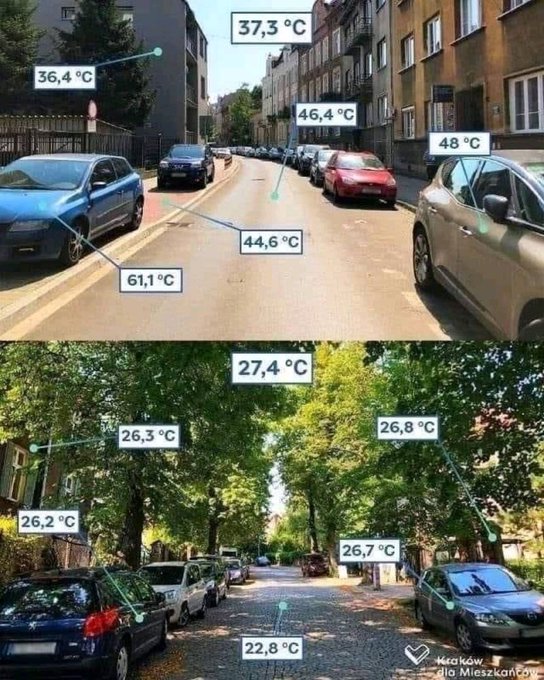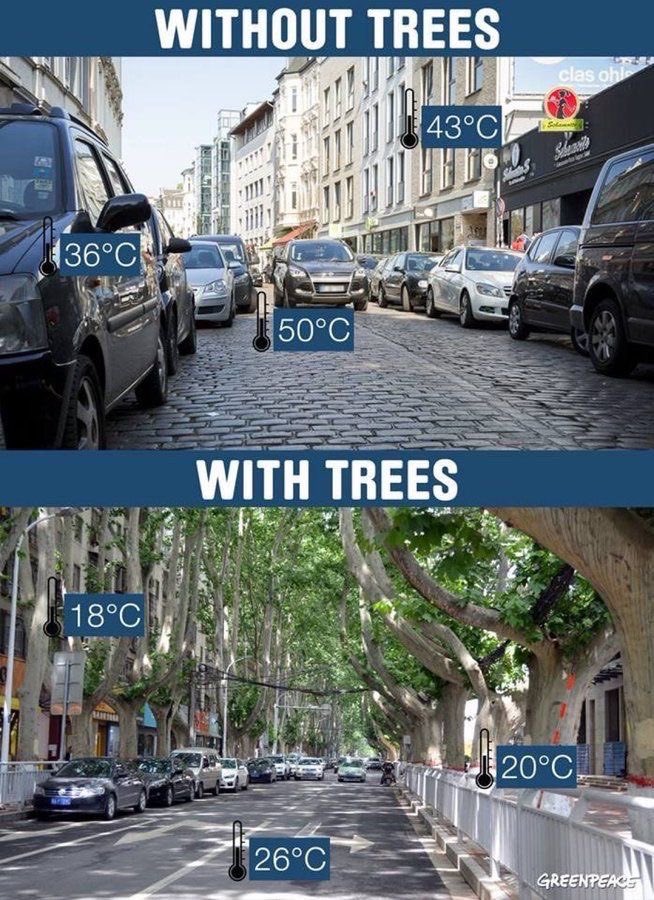
The remarkable cooling effect of trees on the land surface temperature of cities has been brought to light in a recent analysis of satellite data conducted across 293 cities in Europe. This study, conducted by Jonas Schwaab and his colleagues at ETH Zurich in Switzerland, has reinforced the significance of tree planting in urban areas as a means of adaptation to global warming.
The findings revealed that the presence of trees has a substantial impact on reducing the surface temperature of European cities during the summer months. In certain regions, this cooling effect can reach an impressive 12°C. In stark contrast, green spaces devoid of trees were found to have a negligible effect on surface temperature.

To conduct their research, the team utilized land surface temperature data collected by satellites to compare temperature variations across different urban areas. They specifically analyzed areas covered by trees, treeless urban green spaces like parks, and the urban fabric consisting of roads and buildings.
It’s worth noting that land surface temperature, as measured by satellites, differs from air temperature, which is more closely associated with human perception. Schwaab explains that the temperature difference between tree-covered areas and built-up areas is typically smaller when considering air temperature rather than land surface temperature.
However, the results clearly demonstrated that areas in cities covered by trees exhibit significantly lower land surface temperatures compared to their surroundings. In central Europe, the temperature variations ranged from 8°C to an astounding 12°C, while in southern Europe, the differences were more modest, ranging between 0°C and 4°C.

These findings carry profound implications for urban planning and climate resilience. By strategically incorporating trees into the urban landscape, city planners and policymakers can effectively combat rising temperatures caused by climate change. The shade provided by trees, coupled with their ability to release water vapor through transpiration, creates a cooling microclimate that mitigates the heat island effect in densely populated areas.
The benefits of urban tree cover extend beyond mere temperature reduction. Trees also play a crucial role in improving air quality by absorbing harmful pollutants and releasing oxygen. Additionally, they provide habitats for diverse wildlife, enhance aesthetic appeal, reduce noise pollution, and promote mental well-being among city dwellers.
The study’s findings underscore the need for concerted efforts to increase tree canopy cover in urban areas. Urban greening initiatives should prioritize the planting and preservation of trees, not only to counteract the heat island effect but also to foster sustainable and livable cities.

As cities worldwide grapple with the escalating challenges posed by climate change, policymakers must recognize the vital role that trees play in urban resilience. By embracing nature-based solutions and incorporating them into urban planning strategies, we can create cooler, healthier, and more sustainable cities for present and future generations. Tree planting initiatives must be supported, and urban landscapes must be transformed into vibrant, green spaces that provide refuge from the intensifying heat of our changing climate.
In conclusion, the study’s findings emphasize the indispensable value of trees in mitigating the urban heat island effect and reducing land surface temperatures in European cities. As the impact of climate change becomes increasingly pronounced, embracing tree planting initiatives represents a proactive and effective approach to adapt to a warmer world. By harnessing the cooling power of trees, we can create resilient and livable cities that offer both environmental and societal benefits.

Leave a Reply